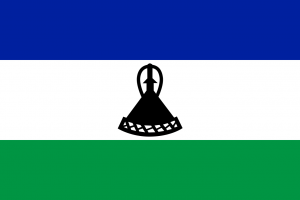Language/Southern-sotho/Grammar/Questions
Hi Southern Sotho learners!😊
In this lesson, we will discuss questions in Southern Sotho grammar. Asking questions is an essential part of communicating with other people, and it is especially important for language learners to understand how to form questions properly.
If you want to improve your Southern Sotho Grammar, you can also use the Polyglot Club website. Find native speakers and ask them any questions!
Basic sentence structure[edit | edit source]
Before we dive into the details of question formation, let's review the basic sentence structure of Southern Sotho:
| Southern Sotho | English |
|---|---|
| Ke phela. | I am alive. |
| O rata setšo. | You like tradition. |
| Ba a tla tlatsa tafole. | They will clean the dishes. |
As you can see, the basic sentence structure in Southern Sotho is Subject-Verb-Object (SVO). The subject comes first, followed by the verb and the object (if there is one).
Forming questions with question words[edit | edit source]
In Southern Sotho, there are several question words that you can use to form questions. The most common question words are listed below:
| Southern Sotho | English |
|---|---|
| Ke eng? | What am I? |
| U se ke ua rata setšo? | Do you like tradition? |
| Ho tla kae ba batho? | Where will the people go? |
| Ke kae mohlala? | Where is the chair? |
As you can see from the examples above, using a question word at the beginning of a sentence automatically turns the sentence into a question.
Note that in Southern Sotho, the question word always comes first in a question. Here are a few more examples to illustrate this point:
- Person 1: Ke tsamaea qetellong. (I am walking in the street.)
- Person 2: Ho qetella kae? (Where are you walking?)
- Person 1: O nka sebeletsa mali. (You are using money.)
- Person 2: Ke eng o sebeletsa mali? (What are you using money for?)
- Person 1: Ba ntse ba le mathata. (They have problems.)
- Person 2: Ba tla ba khutla jwang? (How will they solve them?)
Forming questions without question words[edit | edit source]
In addition to using question words, you can also form questions in Southern Sotho by changing the intonation of a sentence. When you ask a yes/no question, you raise the pitch of your voice at the end of the question. Here are a few examples:
- Person 1: Ke phepa, o sa phepa? (I am happy, are you happy?)
- Person 2: Ho bolela ka moo? (What are you talking about?)
In the first example, Person 1 asks a yes/no question by simply adding a rising intonation to the end of the sentence. In the second example, Person 2 asks a question without using a question word by adding "ka moo" to the end of the sentence, which means "about what?".
Exercises[edit | edit source]
Now that you have learned the basics of forming questions in Southern Sotho, let's practice with some exercises. Translate the following English questions into Southern Sotho:
- What is your name?
- Where do you live?
- Do you have any brothers or sisters?
- How old are you?
Key takeaways[edit | edit source]
By mastering question formation in Southern Sotho, you will be able to communicate more effectively with native speakers and improve your overall language proficiency. Remember to practice forming questions with both question words and intonation, and don't hesitate to ask native speakers for feedback on your pronunciation and grammar.
Sources[edit | edit source]
➡ If you have any questions, please ask them in the comments section below.
➡ Feel free to edit this wiki page if you think it can be improved. 😎
Other Lessons[edit | edit source]

